Friday Photography | Lower 9th Ward, 6 Months After Katrina




A good friend took these shots of the Lower 9th Ward over Mardi Gras weekend, aproximately 6 months after Hurricane Katrina made landfall. See the full set.
The Official Blog of Architecture for Humanity: Minnesota




A good friend took these shots of the Lower 9th Ward over Mardi Gras weekend, aproximately 6 months after Hurricane Katrina made landfall. See the full set.
Posted By
Colin
at
2:31 PM
0
Comments
![]()
(Part 2 of a 13 part series)
Posted By
Colin
at
8:23 AM
0
Comments
![]()
Tags: south asian tsunami, Tsunami Recovery in Thailand by Sishir Chang
(Part 1 of a 12 part series)
Five weeks after the Tsunami hit, Sishir Chang went to Thailand to see how the people there were recovering and to see how those concerned could help. The following is the first installment of his experiences in the aftermath of one of the world‚’s most devastating natural disasters. Originally published in the Southasian, the article is being republished here, with previously unpublished photographs, with the author's permission.
_______
Part 1: THAI BAY
I hesitated for a moment as I walked up to the sea that swallowed people. Then I stepped into the clear blue waters of the Thai bay. I had just arrived in Phuket, Thailand a few hours ago and morbid thoughts like that were hard to avoid. This was a place that I had wanted to come to for years and even though I had been to Southeast Asia many times something else had always come up. Finally five weeks after a tsunami that had killed hundreds of people on the beach that I was standing on I was here. I had come to one of the hardest hit places by the December 26th tsunami to see for myself how the people were recovering and how those of us concerned about them could help. I came expecting to see devastation and hardship, which I found, but also much more. I found a beautiful country and people rapidly rebuilding from one of the worst disasters in human history and who are eager to invite visitors back to their country. I heard gripping tales of survival, tragic stories of loss and witnessed destruction on an unbelievable scale. I found frustration among survivors and aid workers but also surprising resilience. I found unbridled hedonism in the midst of wreckage, economic recovery and aid in unlikely ways.
Posted By
Colin
at
12:29 PM
0
Comments
![]()
Tags: south asian tsunami, Tsunami Recovery in Thailand by Sishir Chang

Friday Photography this week is special. Three friends "spent three months on the U.S. Mexico border filming and distributing hundreds of disposable cameras to two groups on different sides of the line: undocumented migrants crossing the desert and Minutemen volunteers trying to stop them."
They've received 1,500 pictures to date and more are coming every day. The photos show a human element that isn’t there when you watch the news or read the paper. They are a first person account of the inhumanity that borders, walls, fences - whether built or psychological - can invoke.
Go to: Border Film Project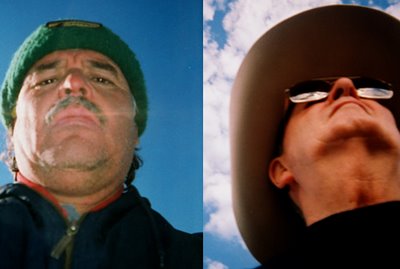
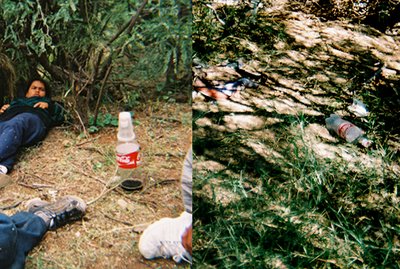
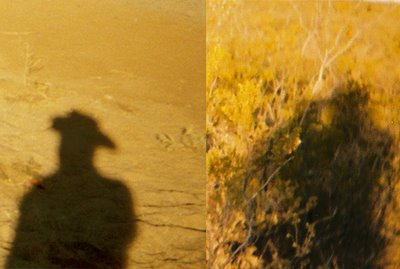
The photos they’ve received from the migrants and the minutemen document both differences and, like the photos above, similarities.
Posted By
Colin
at
7:21 AM
0
Comments
![]()
The Structures For Inclusion conference, held in San Francisco, runs from Friday, March 24th to Sunday, March 26th. Architecture For Humanity's co-founder Kate Stohr will be a moderating a panel entitled "Designers Roles in Disaster Preparedness & Relief". AFH|MN's own Maureen is excited to be able to attend the conference and we are excited to hear about it when she gets back. Expect more from her later.
"From its inception in 2000, the dual mission of SFI has consistently been 1) to showcase design efforts that reach out to and serve a diverse clientele, and 2) to provide information on alternative career paths available to students and young designers."
For more information: Structures for Inclusion 6
While looking into this conference I found out that it is put on, in part, by the Design Corps. The Design Corps works in conjunction with AmeriCorps, linking interested and skilled volunteers with groups around the US in need of design services.
They offer 1 and 2 year Fellowships. Past and ongoing projects include a farmworker/ migrant housing program, self-help housing, and other various community planning/ building projects. They have ongoing projects in Alabama, Florida, New Orleans, North Carolina, and Virginia, as well as a summer design/ build studio for students.

In my hectic last months of school I entertained the idea of working for AmeriCorps but had trouble finding a program that was design related. How I missed such a great resource I have no idea, but I'm now beginning to entertain similar thoughts...
Two other groups have a hand in the SFI conference as well: Public Architecture, and Urban Ecology. A more in depth look into these and other related organizations to come.
Posted By
Colin
at
2:12 PM
0
Comments
![]()
Tags: future-positive creativity, news
For the first time in human history, the number of people living in urban areas matches the number of people living in rural areas. In fact, after 2020, cities will account for all future world population growth while the number of people living rurally will shrink at a constant rate. The majority of these new "urbanites" will live in cities like Lagos, Mumbai, Mexico City, and Jakarta.
But what's really fascinating is that of all urbanites, world-wide, 3/4ths of them will live in something that can't even really be called a "city" by Western standards. These are the slums, the shantytowns and the favelas... the peripherally urban.
Kibera, Kenya - Africa's largest slum:
This is what humanity looks like, and it's hardly a blip on the radar of what Western culture considers important. Mike Davis, a self-described "Marxist-Environmentalist", explores this complex reality in his new book, Planet of Slums.
Excerpt:
"The cities of the future, rather than being made out of glass and steel as envisioned by earlier generations of urbanists, are instead largely constructed out of crude brick, straw, recycled plastic, cement blocks, and scrap wood... Instead of cities of light soaring toward heaven, much of the twenty-first-century urban world squats in squalor, surrounded by pollution, excrement, and decay."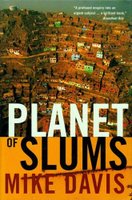 Amazon.com
Amazon.com
Salon.com Review
New Left Review
Posted By
Colin
at
12:40 PM
3
Comments
![]()
Tags: slum urbanism
Check it out. Many thanks to Yust for putting together such a lovely site.
Posted By
Colin
at
5:45 PM
0
Comments
![]()
What can the shantytown teach us about urban development? What can it teach us about suburban development? Will we be retrofitting multi-unit apartments into today's McMansions in 50 years? Architect Teddy Cruz is hard at work answering these questions as we speak.
See Rio de Janeiro:
See Tijuana: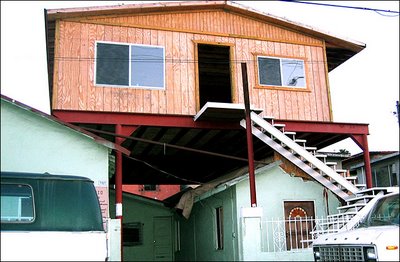
Now see Teddy Cruz's "Mi Pueblo" San Ysidro Pilot Village: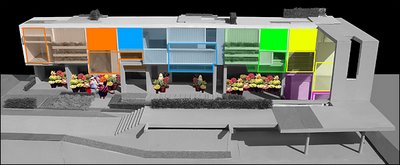
NYT article about Teddy Cruz via Archinect. See the Wikipedia entry for "shanty towns" for more on that topic. Robert Neuwirth writes about his four years living in squatter towns in his blog, squattercity. And be sure to check out Bryan Finoki's tour-de-force post, urban syntax: at the border, at his blog, Subtopia: A Field Guide to Military Urbanism.
Posted By
Colin
at
5:36 PM
0
Comments
![]()
Tags: slum urbanism
Despite consistently ranking one of the healthiest, smartest, and most livable states in the US, Minnesota, and specifically the Twin Cities metro region, does not work for everyone. The Brookings Institution released a report in October of 2005 that delves into disparities between groups within this region.
Click the picture to see a full size version:

The report can be found on this page, under the title. This is required reading for anyone interested in some of the problems facing the Twin Cities.
Posted By
Colin
at
7:21 PM
0
Comments
![]()
Tags: news
... to the official AFHMN weblog!
While there are many wonderful blog's out there about architecture and design (Inhabitat, BLDBLOG, Pruned, and Archidose - to name a few), we here at AFHMN want to bridge that gap between architecture and social crisis. While sometimes our interests might wander, our primary concern is humanitarian, with an architecture and design based focus.
We are a group of 20 or so (and growing!) individuals residing in the Twin Cities of Minnesota who believe that architecture and design are powerful tools that can be used to find solutions to global, social and humanitarian crises. We came together through Architecture For Humanity - International.
We are starting this blog with one thing on our minds: There are other people out there that think like we do... Let's find them. If you happen to come across this site and like what you see, email it to a friend. Hell, email it to all of your friends. We want to hear from you; email us, make comments, join your local AFH chapter, if you don't have a local AFH chapter... what are you waiting for? There are people out there that think like you do, START ONE.
And above all, Design like you give a damn.
Posted By
Colin
at
10:21 PM
0
Comments
![]()
Tags: news
